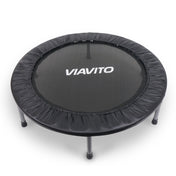TL;DR — Running pads offer compact convenience, while treadmills deliver full-featured, joint-safe endurance training.
Quick Facts
- Category: Cardio Machines
- Equipment: Running pads, folding treadmills
- For: Apartment users, runners, hybrid trainers
Short Answer
Running pads are space-saving and minimal, ideal for walking and light jogging. Treadmills suit longer sessions and higher-impact training.
1) Running Pad vs Treadmill: Design & Space Requirements
Running pads are the minimalists of the fitness world: slim, lightweight, and easy to slide under a sofa or bed. Many weigh under 30 kg, fold nearly flat, and include transport wheels - perfect for small flats or multipurpose rooms.
Treadmills take more space but give you a sturdier frame, wider belt, handrails, and a console that’s easier to read in motion. Folding treadmills reduce storage height after workouts, often with “soft-drop” assistance for safe unfolding.
2) Speed & Performance: How Treadmills Outpace Running Pads
Running pads typically cap at 6–10 km/h with shorter belts (~40–45 × 100–120 cm), which favours walking and gentle jogs.
Treadmills commonly reach 16–20+ km/h and add 10–15% incline (sometimes also decline), with longer, wider belts (~45–55 × 130–150+ cm) for natural stride length, intervals, and hill training.
3) Cushioning & Comfort: Protecting Your Joints Indoors
Treadmills usually win on comfort thanks to multi-zone deck cushioning that reduces impact on knees and hips - ideal for regular runs and heavier users. Pads use firmer decks that feel great for low-impact walking but can fatigue joints during longer, faster sessions. Handrails and a safety key on treadmills add another layer of protection.
4) Noise, Power & Energy Use
Running pads are generally quieter and more energy-efficient because of lower speeds and smaller motors. Modern treadmills can also be surprisingly quiet when paired with a quality mat and cushioned deck, though they draw more power at higher speeds and incline. If you live in an apartment with sensitive neighbours, consider a treadmill with good isolation and a floor mat - or opt for a walking pad for daily steps.
5) Apps & Smart Features
Running pads offer simple remotes or basic apps for speed and step tracking.
Treadmills frequently integrate with Zwift, Kinomap, iFIT and Echelon Fit or onboard programmes, enabling auto-adjust speed/incline, heart-rate features, user profiles, and global/coached workouts that keep training fresh and progressive.
6) Cost & Maintenance Compared
Running pads are budget-friendly and great entry points into home cardio. They shine for single users focused on steps and gentle movement.
Treadmills cost more upfront, but they’re the better long-term investment for consistent runners, families, or anyone pursuing structured training. Compare warranties: motors/frames often carry longer coverage than parts and labour.
Buyer Personas
- Remote Worker / Apartment User: wants steps while working; needs easy storage → Running pad.
-
Beginner / Returning to Fitness: walks most days, adds short jogs; plans to progress → Entry level treadmill with cushioning.
-
Performance-Oriented Runner: intervals, hill work, longer sessions → Treadmill ≥ 2.5 CHP, belt ~50 × 140 cm, incline ≥ 10%.
- Family / Shared Gym: durability and stability for multiple users → Sturdy treadmill with higher maximum user weight.
Safety Checklist
-
Leave 50–100 cm clear space behind a treadmill.
-
Use a safety key and handrails when needed.
-
Wear cushioned running shoes; start slow and progress weekly.
-
Place equipment on a non-slip mat to reduce noise and vibration.
Maintenance Basics
-
Lubricate the belt/deck per manufacturer guidance.
-
Vacuum dust around the deck and motor area.
-
Check belt tension and centering monthly.
-
For pads: inspect hinges/column locks and wheel bearings.
Running Pads vs Treadmills
Choose a running pad if your top priorities are convenience, compact storage, and adding more daily movement.
Choose a treadmill if you want speed, incline variety, superior cushioning, and room to progress for years.
FAQ
Can I sprint on a running pad?
Not really. Running pads are designed for walking and light jogging (typically up to 10 km/h).
Are treadmills too noisy for apartments?
Modern cushioned decks and a good floor mat can keep noise surprisingly low. If in doubt, choose models marketed as “quiet” and avoid late-night high-speed sessions.
Which burns more calories - running pad or treadmill?
Usually treadmills, because they enable higher speeds and incline. That said, consistency matters most: daily walking adds up.
What belt size should I pick?
For comfortable running, aim for ≥ 50 × 140 cm. For walking or gentle jogs, ~45 × 120 cm is typically fine.
CHP vs HP - what’s the difference?
CHP (continuous horsepower) reflects sustained motor output and is a better indicator for running. Look for ≥ 2.5 CHP if you plan to run regularly.

